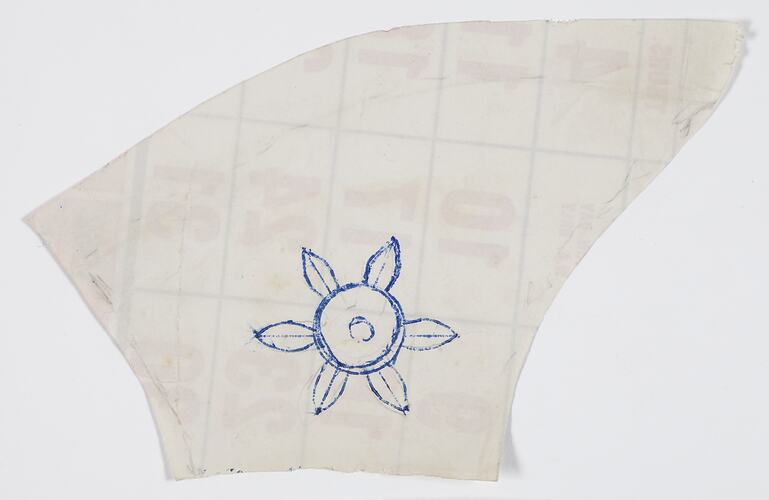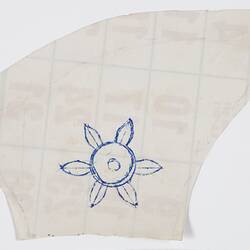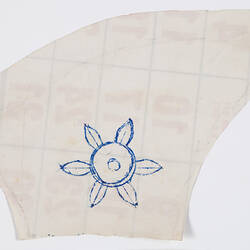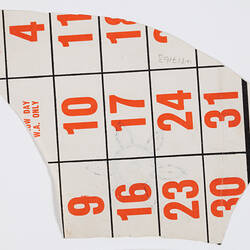Summary
Created sometime between the 1930s and 1970s on an everyday calendar, this side viewed boot shape pattern and was most likely used by Stanio Fancoff in creating his various shoe styles sometime between the 1930s and the 1970s. Furthermore, this particular pattern illustrates Stanio Fancoff's diverse use of everyday objects within his creative pursuit. Along with many others, this patterns was an integral part of Stanio's shoemaking craft and business.
Stanio Ivanoff Fancoff was born in 1908 in Bojentsi, a small village in Bulgaria. At age 11, Stanio left home to learn the shoemaking trade. In 1929, he immigrated to Melbourne, settled in Fitzroy and began to work for the V.G. Zemancheff & Sons basket shoe factory in South Melbourne. In1936, he married Dorotea Georgi Touzou who had recently arrived in Australia. Around this time, Stanio set up his own shoemaking business from home, with Georgi, her cousin and sister weaving the shoes which he then assembled. Select shoe samples were then taken to Sydney and Tasmania for sale. In 1942, Georgi and Stanio moved to Broken Hill for Georgi's health; there daughter Nancy was born and Stanio set up a shoe shop/factory. In 1945, Georgi died and by 1950 Stanio and Nancy had moved to Adelaide where he again opened a shoemaking business and shop. He passed away in 1978, having been in the shoemaking business for 59 years. This collection documents his migration and working life experiences.
Physical Description
Created on a commercial calendar, the white gloss front side exhibits a centrally located blue penned flower (aerial view) while the reverse exhibits red calendar numbers and text with its divisional black lines. Although in good condition, this pattern does exhibit several crease lines and its edges appear worn in statue.
Significance
This collection is significant in documenting a small migrant business as well as the fashion of a particular period. It is well provenanced and charts the application of trade skills in a new country. It also illustrates the stages of hand shoe manufacture from the 1930s, demonstrating the enduring nature of the tools and patterns that were used.
More Information
-
Collecting Areas
-
Acquisition Information
Donation from Nancy Vasileff, 21 Mar 2007
-
Maker
-
Inscriptions
Reverse, Printed, Red Ink, Text: THURS. /NSW DAY/W.A. ONLY/4/9/10/11/16/17/18/23/24/30/31/1962
-
Classification
-
Category
-
Discipline
-
Type of item
-
Overall Dimensions
167 mm (Width), 105 mm (Height)
-
References
R.A. Salaman, 'Dictionary of Leather-working Tools c.1700-1950 and Tools of Allied Trades,' London: George Allen and Unwin (Publishers) Ltd, 1986 [Section 2: Boot and Shoe Maker pp18-185]. John Peacock. 'Shoes, The Complete Sourcebook,' London:Thames & Hudson Ltd, 2005. NAA holds file (online) on Vasil George Zemancheff, Fancoff's employer
-
Keywords
Boot & Shoemaking, Bulgarian Communities, Bulgarian Immigration, Immigration, Small Businesses





